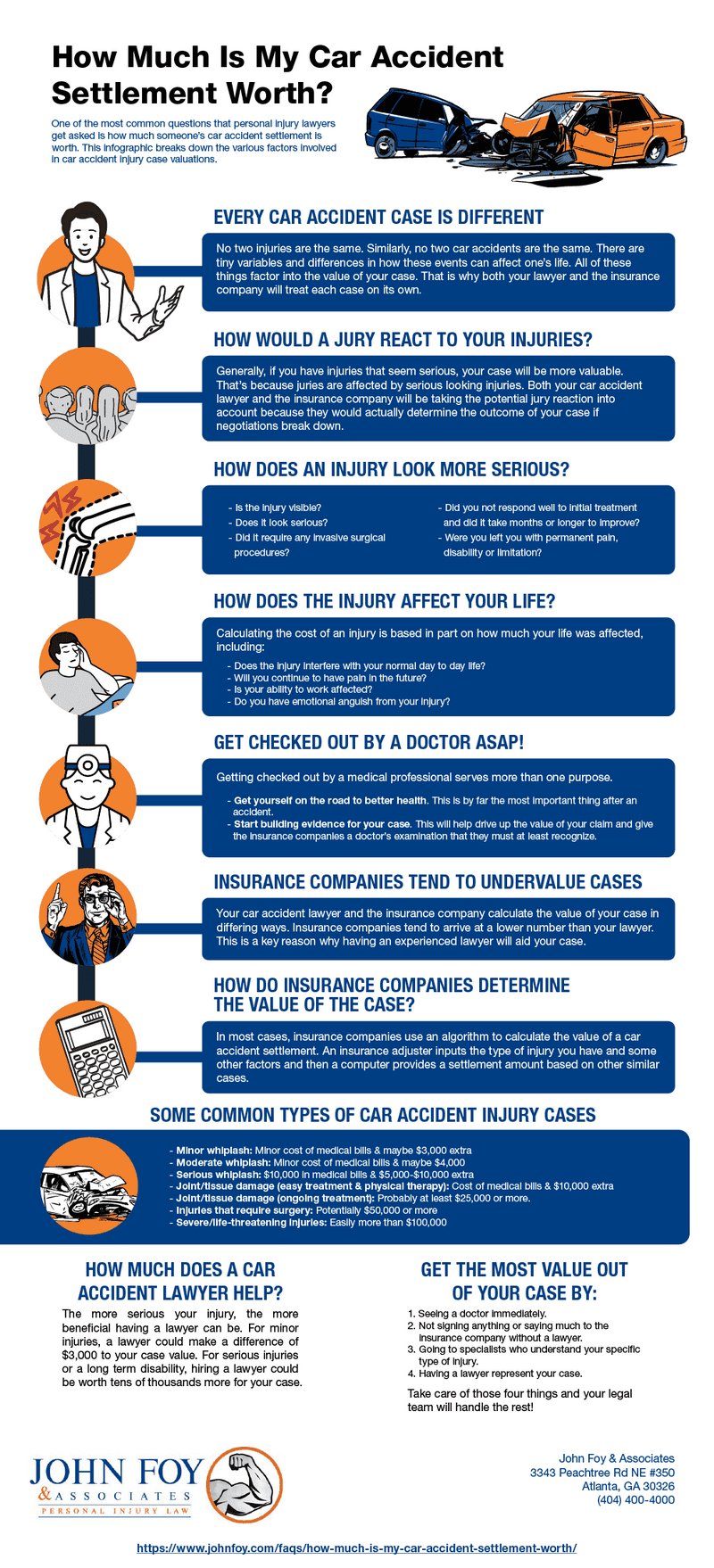
The Intricacies of Auto Accident Claims Adjustment.
If you’ve been involved in an auto accident, you understand the complex nature of the claims adjustment process. The intricacies of an auto accident can be overwhelming, especially when it comes to the necessary paperwork, negotiations, and legal obligations.
At Auto Accident Claims Adjustment, we specialize in helping individuals like you navigate the often confusing world of auto accident claims. Our team of experienced professionals knows the ins and outs of the industry, ensuring that your claim is handled with precision and expertise.
From gathering crucial evidence to negotiating with insurance companies, our experts will guide you through every step of the adjustment process. We understand that each auto accident claim is unique, and we tailor our approach to meet your specific needs.
With our extensive knowledge and understanding of the auto accident industry, you can trust us to handle your claim efficiently and effectively. We will work tirelessly to ensure that you receive the compensation you deserve.
“Don’t let the intricacies of auto accident claims adjustment overwhelm you. Let our team of professionals handle the process for you.”
Contact Auto Accident Claims Adjustment today to schedule a consultation and take the first step towards successfully navigating the auto accident claims adjustment process.
The Intricacies of Auto Accident Claims Adjustment:
When it comes to auto accidents, the process of claims adjustment can be quite complex and challenging. Understanding the intricacies of this process is crucial for anyone who finds themselves involved in an accident, whether as a driver, passenger, or pedestrian.
Auto accident claims adjustment refers to the process of evaluating, negotiating, and settling claims for damages and injuries resulting from an accident. This process involves various parties, including insurance companies, adjusters, and legal professionals.
The first step in the claims adjustment process is reporting the accident to the appropriate authorities and insurance companies. This is important to ensure that all parties involved are aware of the incident and can begin the necessary investigations.
Once the accident is reported, the insurance company assigns an adjuster to assess the damages and injuries. The adjuster will review the police report, statements from the involved parties, medical records, and any other relevant documentation. They will also inspect the vehicles involved and may even visit the accident scene.
Based on their findings, the adjuster will determine the extent of liability and the amount of compensation that should be paid. They will consider factors such as the severity of the injuries, the impact on the injured party’s daily life, and any additional expenses incurred as a result of the accident.
The negotiation process between the insurance company and the injured party can be lengthy and contentious. It may involve multiple rounds of negotiations, counteroffers, and sometimes even mediation or arbitration. The goal is to reach a fair settlement that adequately compensates the injured party for their losses.
If a settlement cannot be reached, the injured party may choose to file a lawsuit to seek compensation through the legal system. This can further complicate the claims adjustment process and may involve additional legal expenses and time.
Overall, the intricacies of auto accident claims adjustment require a thorough understanding of insurance policies, legal procedures, and the dynamics of negotiations. Seeking guidance from experienced professionals, such as personal injury attorneys, can greatly facilitate the process and ensure that the injured party receives fair and just compensation for their damages and injuries resulting from an auto accident.
Guide to Navigating the Process
When it comes to auto accident claims adjustment, navigating the process can be quite daunting. The intricacies involved in dealing with insurance companies and filing a claim can often leave people feeling overwhelmed and unsure of how to proceed. However, with the right guidance and knowledge, you can confidently navigate through the adjustment process and ensure that you receive the compensation you deserve.
Here are some essential steps to help you navigate the auto accident claims adjustment process:
- Report the Accident: The first step after an auto accident is to report it to your insurance company. Provide them with all the necessary details, including the date, time, and location of the accident, as well as any relevant information about the parties involved.
- Gather Evidence: Collect as much evidence as possible to support your claim. Take photos of the accident scene, the damage to the vehicles involved, and any injuries sustained. Obtain witness statements if available and keep all medical records related to the accident.
- Contact the Adjuster: Once your claim is filed, the insurance company will assign an adjuster to assess the damages. It is essential to establish a good line of communication with the adjuster and provide any additional information they may require.
- Cooperate and Provide Information: Be cooperative throughout the process and respond promptly to any requests for information from your insurance company or the adjuster. Keep detailed records of all conversations and written communications.
- Review the Claim Evaluation: After the adjuster has evaluated your claim, carefully review their assessment. If you disagree with their findings, be prepared to provide additional evidence to support your case.
- Negotiations and Settlement: If the adjuster’s initial offer does not fully compensate you for your losses, you have the right to negotiate. You can present counter offers and provide any supporting documentation to support your desired settlement amount.
- Appeal if Necessary: If you are unable to reach a satisfactory settlement through negotiations, you may have the option to appeal the decision. Consult with a legal professional to understand your rights and options in this situation.
- Seek Legal Advice: If you encounter difficulties during the auto accident claims adjustment process or are unsure of how to proceed, it is advisable to seek legal advice. An attorney experienced in personal injury claims can provide valuable guidance and represent your interests.
By following these steps, you can navigate the intricacies of the auto accident claims adjustment process with confidence. Remember to document everything, be proactive, and seek professional assistance when needed to ensure a fair outcome for your claim.
Understanding Auto Insurance Policies
When it comes to navigating the intricacies of auto accident claims adjustment, it is crucial to have a solid understanding of auto insurance policies. An auto insurance policy is a contract between the policyholder and an insurance company, which provides financial protection in case of an accident involving the insured vehicle.
There are several key components of an auto insurance policy that you should be familiar with:
1. Liability Coverage: This type of coverage pays for the damages and injuries caused to others if you are responsible for an accident. It includes bodily injury liability and property damage liability.
2. Collision Coverage: Collision coverage pays for the repairs or replacement of your vehicle in case of an accident, regardless of fault. It is optional but is recommended for vehicles with a higher value.
3. Comprehensive Coverage: Comprehensive coverage provides protection against damages caused by incidents other than collisions, such as theft, vandalism, fire, or natural disasters.
4. Personal Injury Protection (PIP): PIP coverage pays for medical expenses, lost wages, and other related costs for you and your passengers, regardless of fault.
5. Uninsured/Underinsured Motorist Coverage: This coverage protects you if you are injured in an accident caused by a driver who doesn’t have insurance or has insufficient coverage.
It is important to carefully review and understand the terms and conditions of your auto insurance policy. Make sure you are aware of the coverage limits, deductibles, and any exclusions that may apply. Additionally, it is advisable to regularly review your policy and make any necessary updates to ensure adequate protection.
By having a good understanding of your auto insurance policy, you can confidently navigate the claims process and ensure that you receive the appropriate compensation for your damages and injuries.
Types of Auto Accident Claims
When it comes to the intricacies of auto accident claims adjustment, understanding the different types of claims is crucial. Depending on the circumstances of the accident, there are several types of auto accident claims that can be filed:
- Property Damage Claims: These claims are filed when there is damage to the vehicle or other property as a result of the accident. It covers the cost of repairs or replacement of the damaged property.
- Bodily Injury Claims: Bodily injury claims are filed when there are injuries sustained by the driver, passengers, or pedestrians involved in the accident. It covers medical expenses, lost wages, pain and suffering, and other related damages.
- Uninsured Motorist Claims: In cases where the at-fault driver does not have insurance or is underinsured, uninsured motorist claims can be filed. It provides coverage for expenses that would typically be covered by the at-fault driver’s insurance.
- Underinsured Motorist Claims: Similar to uninsured motorist claims, underinsured motorist claims are filed when the at-fault driver’s insurance coverage is not sufficient to cover the full extent of the damages. It covers the remaining costs that exceed the at-fault driver’s insurance limits.
- Personal Injury Protection (PIP) Claims: PIP claims are filed to cover medical expenses and other related costs, regardless of who is at fault. This type of claim is available in states where no-fault insurance laws are in place.
- Wrongful Death Claims: If a person dies as a result of the accident, wrongful death claims can be filed on behalf of their surviving family members. It covers funeral expenses, loss of income, and other related damages.
Understanding the different types of auto accident claims can help you navigate the claims adjustment process more effectively. It is important to consult with an experienced attorney or insurance professional to ensure that you file the appropriate type of claim and receive the compensation you are entitled to.
Steps to Take After an Auto Accident
Being involved in an auto accident can be a stressful and confusing experience. However, knowing the right steps to take after an accident can help you navigate the intricacies of the claims adjustment process more effectively. Here are some important steps to follow:
- Ensure Safety: The first and foremost step is to ensure the safety of yourself and others involved. Move your vehicle to a safe location if possible and check for any injuries. If anyone is injured, call for medical help immediately.
- Contact Authorities: It is essential to report the accident to the police, even if it is a minor one. They will document the incident, gather necessary information, and provide you with a police report, which may be required for your insurance claim.
- Gather Information: Collect important information from all parties involved in the accident. This includes names, contact details, insurance information, and vehicle details. Use your phone or a notepad to document this information accurately.
- Document the Scene: Take pictures of the accident scene, including the vehicles involved, damages, and any visible injuries. This visual evidence can be beneficial for your insurance claim.
- Notify Your Insurance Company: Contact your insurance company as soon as possible to report the accident. Provide them with all the relevant details and information you have gathered. Follow their instructions carefully and ask any questions you may have.
- Seek Medical Attention: Even if you don’t feel any immediate injuries, it is advisable to seek medical attention. Some injuries may not manifest symptoms right away, and delaying medical care can negatively impact your claim.
- Keep Records: Keep track of all documentation related to the accident, including medical bills, repair estimates, and any communication with insurance adjusters. These records will help support your claim and ensure a smoother adjustment process.
- Cooperate with the Claims Adjuster: When an insurance claims adjuster is assigned to your case, be cooperative and provide all requested information promptly. Remember, their role is to evaluate your claim and help you receive the necessary compensation.
- Consider Legal Assistance: If the accident involves significant damages, injuries, or complexities, it may be wise to consult with an attorney specializing in auto accident claims. They can provide expert guidance and represent your best interests throughout the process.
- Follow Up: Stay in touch with your insurance company, follow up on the progress of your claim, and ask for updates regularly. It is important to maintain communications to ensure a resolution in a timely manner.
By following these steps, you can navigate the intricate process of an auto accident claim adjustment with greater confidence and peace of mind.
Documenting the Accident Scene
When it comes to auto accident claims adjustment, documenting the scene of the accident is crucial. This step is essential in providing accurate and credible evidence to support your claims. By collecting the necessary information and evidence, you can strengthen your case and ensure a fair adjustment process.
Here are some key steps to follow when documenting the accident scene:
- Ensure everyone’s safety: Before documenting anything, make sure that all parties involved in the accident are safe. If needed, contact emergency services.
- Take photographs: Use your smartphone or a camera to capture clear and detailed photographs of the accident scene. Focus on the position of the vehicles, any damage, skid marks, and road conditions.
- Gather witness information: If there were any witnesses present at the scene, collect their contact information. Their testimonies can provide additional support to your claims.
- Record details: Write down the date, time, and location of the accident. Include any relevant details such as weather conditions, traffic signs, or road hazards. The more information you have, the stronger your case will be.
- Draw a diagram: Create a simple diagram that shows the positioning of the vehicles involved in the accident. Include street names, traffic signals, and any other relevant landmarks.
- Obtain a police report: If law enforcement was called to the scene, request a copy of the accident report. This official document can provide valuable evidence to support your claims.
- Collect other evidence: If applicable, gather any additional evidence such as medical records, repair estimates, or statements from experts. This evidence can further support your case during the claims adjustment process.
Remember, accurate and detailed documentation of the accident scene can greatly influence the outcome of your claims adjustment. By following these steps and providing credible evidence, you increase your chances of receiving a fair and appropriate settlement for your auto accident claims.
Filing an Auto Accident Claim
When you are involved in an auto accident, it is important to understand the intricacies of filing an auto accident claim. The claims adjustment process plays a crucial role in handling the aftermath of the accident and getting the compensation you deserve.
The first step in filing an auto accident claim is to notify your insurance company as soon as possible. Most insurance policies require you to report any accident within a specific timeframe, so be sure to check your policy and follow the guidelines accordingly.
Once you have notified your insurance company, they will assign a claims adjuster to your case. The claims adjuster will be responsible for investigating the accident and evaluating the damages. They will gather all necessary information, including police reports, medical records, and witness statements.
During the adjustment process, the claims adjuster will assess the liability for the accident. They will review the details of the accident, including the drivers involved, any traffic violations, and any potential contributory negligence. This assessment will help determine the amount of compensation you may be entitled to.
It is important to provide the claims adjuster with accurate and detailed information about the accident. This includes providing photographs of the damages, any medical bills or treatment records, and any other relevant evidence. The more information you provide, the more effectively the adjuster can evaluate your claim.
Once the claims adjuster has completed their investigation, they will negotiate a settlement with you or your legal representative. This settlement will include compensation for property damage, medical expenses, lost wages, and any other damages you may have incurred as a result of the accident.
If you are unable to reach a fair settlement agreement with the claims adjuster, you may need to consider pursuing legal action. In this case, it is recommended to consult with an attorney who specializes in auto accident claims.

In conclusion, understanding the filing process and working with a skilled claims adjuster is essential for navigating the intricacies of an auto accident claim. By following the proper steps and providing accurate information, you can increase your chances of receiving fair compensation for your damages.
Working with an Auto Accident Claims Adjuster
When you find yourself in the unfortunate situation of being involved in an auto accident, the intricacies of filing and navigating an insurance claim can be overwhelming. That’s where an auto accident claims adjuster comes in. These professionals are trained to handle the claims process and ensure that you receive the compensation you deserve.
Working with an auto accident claims adjuster can be beneficial in several ways. They have a deep understanding of the claims process and know how to navigate through the complexities of filing a claim. They are familiar with the legal requirements and procedures involved, which can save you time and hassle.
One of the key advantages of working with an auto accident claims adjuster is their expertise in determining the value of your claim. They will assess the damage to your vehicle, review medical records, and consider other factors such as lost wages and pain and suffering. This ensures that you receive a fair settlement that covers all of your losses.
Another benefit of working with an auto accident claims adjuster is that they act as a liaison between you and the insurance company. They will communicate with the insurance company on your behalf, handling all the necessary paperwork and negotiations. This can relieve some of the stress and frustration of dealing with the insurance company directly.
To effectively work with an auto accident claims adjuster, it’s important to provide them with as much information as possible. Be prepared to provide details about the accident, including any photos or documentation you may have. Cooperation and transparency can help expedite the claims process and ensure a favorable outcome.
Overall, working with an auto accident claims adjuster can greatly simplify the claims adjustment process. Their expertise and guidance can help you navigate the complexities of filing a claim and ensure that you receive fair compensation for your losses. Remember to stay engaged and proactive throughout the process, and seek legal advice if necessary.
Evaluating Auto Accident Damages
When it comes to evaluating auto accident damages, understanding the intricacies of the claims process is essential. Accidents can lead to various types of damages, both physical and financial, and having a clear understanding of these damages is crucial for a successful claims settlement.
One of the primary types of damages in an auto accident claim is property damage. This includes the repair or replacement costs of the damaged vehicle and any other property that was involved in the accident. It is important to gather evidence, such as photographs and repair estimates, to accurately assess the value of the property damage.
Another significant aspect of evaluating auto accident damages is assessing the extent of any bodily injuries. This involves considering both the immediate medical expenses and any ongoing medical treatment that may be necessary. It can also involve consideration of pain and suffering or emotional distress resulting from the accident.
Lost wages and loss of earning capacity are also important factors in evaluating auto accident damages. If the accident results in the victim being unable to work for a period of time, the value of the wages lost during that time can be included in the claim. Additionally, if the accident causes a long-term or permanent disability that reduces the victim’s ability to earn income, the potential future earnings that they may have lost can also be taken into account.
It is important to note that evaluating auto accident damages is a complex process that requires knowledge of the legal aspects and the specific circumstances surrounding the accident. Seeking the assistance of an experienced claims adjuster or attorney can be beneficial in ensuring that all relevant damages are accurately assessed and included in the claim.
In conclusion, understanding the intricacies of evaluating auto accident damages is crucial in the claims adjustment process. Property damage, bodily injuries, lost wages, and loss of earning capacity are all factors that need to be considered when determining the value of an auto accident claim. Seeking professional assistance can help ensure that all damages are properly evaluated and included in the claims settlement.
Negotiating a Settlement
When it comes to the intricacies of auto accident claims adjustment, one of the most important steps is negotiating a settlement. This process involves reaching an agreement between the parties involved in the accident, typically the claimant and the insurance company.
Claims adjustment is a complicated process that requires a deep understanding of the legal and insurance systems. Negotiating a settlement involves evaluating the extent of the damages, determining fault, and calculating the appropriate compensation.
During the negotiation process, it is essential to have clear and concise communication with all parties involved. Emphasize the details of the accident, presenting evidence such as police reports, witness statements, and medical records to support your claim.
It is crucial to stay organized and keep accurate records of all communication and documentation related to the claim. This includes correspondence with insurance companies, medical bills, and any receipts for repairs or other expenses resulting from the accident.
When negotiating a settlement, it is beneficial to have solid documentation and a strong argument to support your case. This may include consulting with legal professionals to ensure that you are fully aware of your rights and entitlements under the law.
Throughout the negotiation process, it is essential to remain calm and composed. Emphasize the impact of the accident on your life and the need for fair compensation to cover medical bills, lost wages, and other damages.
Remember, negotiating a settlement can be a lengthy and complex process. Patience, persistence, and an understanding of the intricacies of auto accident claims adjustment are key to achieving a fair and satisfactory resolution.
Dealing with Denied or Undervalued Claims
Accidents happen, and unfortunately, even the most careful drivers can find themselves involved in an incident. When an auto accident occurs, it can lead to a stressful and confusing process of filing a claim with your insurance company to recover damages.
However, sometimes insurance companies may deny or undervalue your claim, leaving you frustrated and unsure of what to do next. In these situations, it’s important to understand the intricacies of the claims adjustment process and take the necessary steps to ensure you receive a fair settlement.
1. Review Your Policy: Start by carefully reviewing your insurance policy to understand the coverage and limitations. Look for specific clauses or exclusions that the insurance company may be using to deny or undervalue your claim.
2. Gather Evidence: Collect all relevant evidence related to the accident, including photos, videos, witness statements, and police reports. This evidence will help support your claim and show the insurance company the extent of the damages or injuries sustained.
3. Consult an Attorney: If you believe your claim has been unfairly denied or undervalued, it may be beneficial to consult with a personal injury attorney who specializes in auto accident claims. They can provide valuable guidance and negotiate on your behalf to ensure you receive a fair settlement.
4. Document Everything: Keep detailed records of all communication with the insurance company, including emails, letters, and phone calls. This documentation will serve as evidence of the insurance company’s handling of your claim and can be used in further negotiations or potential legal action.
5. File an Appeal: If your claim is denied, you have the right to appeal the decision. Follow the insurance company’s procedures for filing an appeal and provide any additional supporting documentation or arguments that strengthen your case.
6. Seek Independent Evaluation: Consider obtaining an independent evaluation of the damages or injuries from a trusted professional. This evaluation can provide an unbiased assessment and serve as additional evidence to support your claim.
7. Stay Persistent: Dealing with denied or undervalued claims can be frustrating, but it’s important to remain persistent. Follow up regularly with the insurance company, providing any requested information promptly and respectfully advocating for your rights.
Remember, every accident and claim is unique, and the process of dealing with denied or undervalued claims can vary. It’s essential to consult with professionals who can assess your specific situation and provide personalized advice.
By understanding the intricacies of the claims adjustment process and taking proactive steps, you can increase your chances of obtaining a fair settlement for your auto accident claim.
The Role of Mediation and Arbitration
Mediation and arbitration play a crucial role in the process of auto accident claims adjustment. They are alternative methods of dispute resolution that can help parties involved in an accident claim settle their differences in a fair and efficient manner.
Mediation is a voluntary process where a neutral third party, known as a mediator, helps facilitate a conversation between the parties involved in the claim. The mediator does not have decision-making power but instead helps the parties find common ground and reach a mutually agreeable solution. Mediation allows for open communication, fostering understanding and empathy between the parties, which can lead to a quicker and more satisfactory resolution.
Arbitration, on the other hand, is a more formal process where a neutral third party, known as an arbitrator, reviews the evidence and arguments presented by both parties and makes a binding decision. Unlike mediation, where the parties have control over the outcome, the arbitrator’s decision is final and cannot be appealed. Arbitration provides a more structured and legally enforceable resolution to the claim, without the need for a courtroom trial.
Both mediation and arbitration offer benefits over traditional litigation. They are generally faster, less expensive, and less adversarial than going to court. They also allow the parties to have more control over the outcome of their claim, as they can actively participate in the resolution process. Furthermore, mediation and arbitration can help preserve relationships between the parties, as they promote cooperation and compromise.
In conclusion, mediation and arbitration are valuable tools in the adjustment of auto accident claims. They provide an opportunity for parties to resolve their differences in a fair and efficient manner, without the need for lengthy and costly litigation. By choosing mediation or arbitration, parties can take control of the claims process and work towards a mutually satisfactory resolution.
undefined
What is “The Intricacies of Auto Accident Claims Adjustment” about?
“The Intricacies of Auto Accident Claims Adjustment: Guide to Navigating the Process” is a comprehensive guide that walks you through the process of dealing with auto accident claims. It provides step-by-step instructions and valuable tips to help you navigate the complex world of claims adjustment.
Is this book suitable for beginners?
Yes, “The Intricacies of Auto Accident Claims Adjustment” is designed for both beginners and those who have some experience with auto accident claims. It covers the basics in an easy-to-understand manner, making it accessible to anyone who needs guidance in navigating the claims adjustment process.
How is the information presented in the book organized?
The information in “The Intricacies of Auto Accident Claims Adjustment” is organized in a logical and sequential manner. It starts with an introduction to the claims process, then delves into the various stages of the adjustment process, including gathering evidence, filing the claim, negotiating with insurance companies, and resolving disputes. Each chapter builds upon the previous one, ensuring a comprehensive understanding of the entire process.
Does the book provide any tips for maximizing claim settlements?
Yes, “The Intricacies of Auto Accident Claims Adjustment” provides valuable tips and strategies for maximizing claim settlements. It offers advice on how to gather strong evidence, document injuries and damages effectively, negotiate with insurance adjusters, and handle disputes. These tips are based on proven techniques and can greatly increase the chances of receiving a fair and satisfactory settlement.
Can this book help me if I already have an ongoing auto accident claim?
Yes, “The Intricacies of Auto Accident Claims Adjustment” can be incredibly helpful if you already have an ongoing auto accident claim. It offers guidance on how to navigate the remaining stages of the process, such as negotiating with insurance adjusters, dealing with any disputes that may arise, and ultimately reaching a resolution. It can provide you with the knowledge and tools necessary to handle your claim more effectively.






